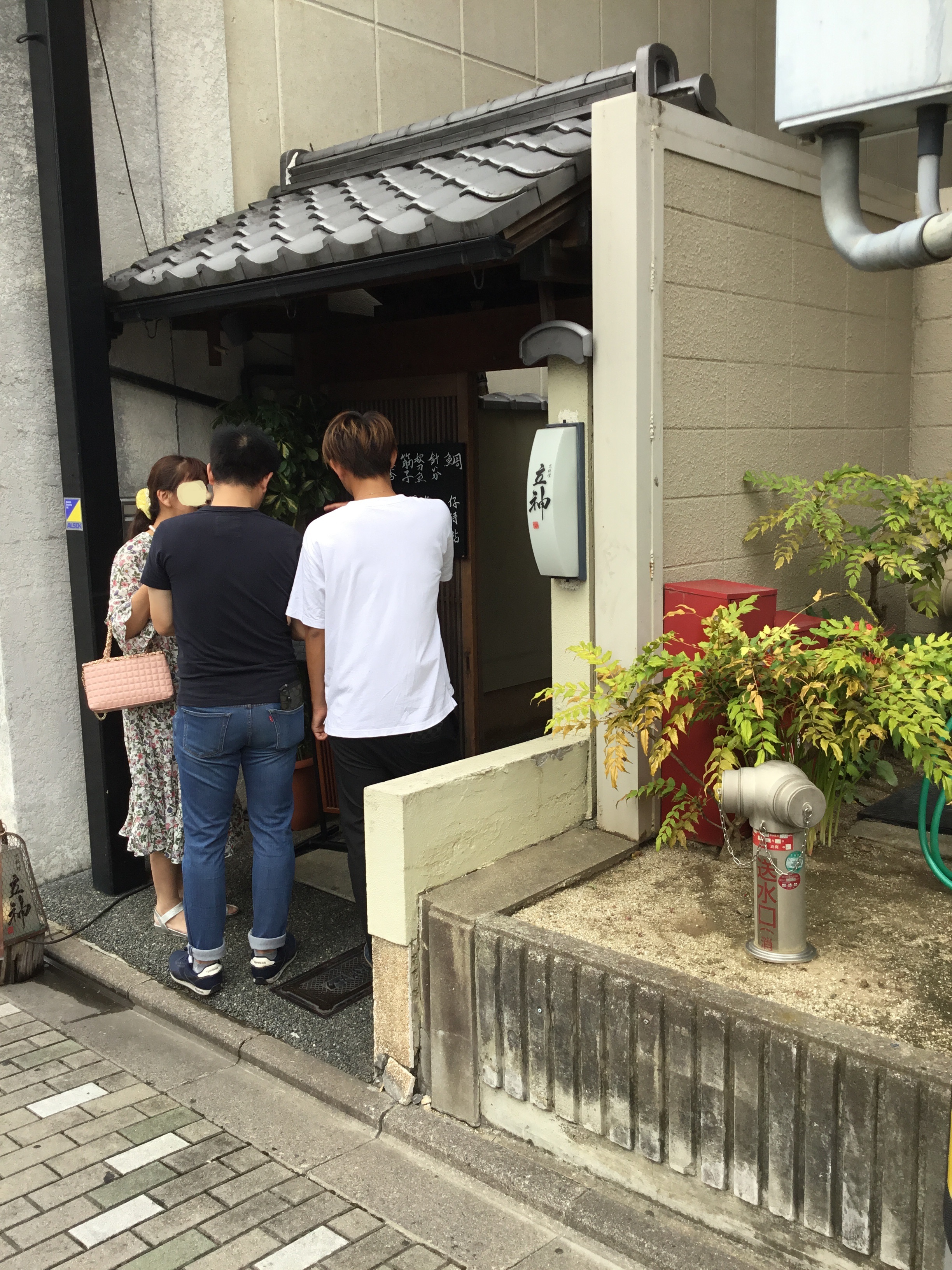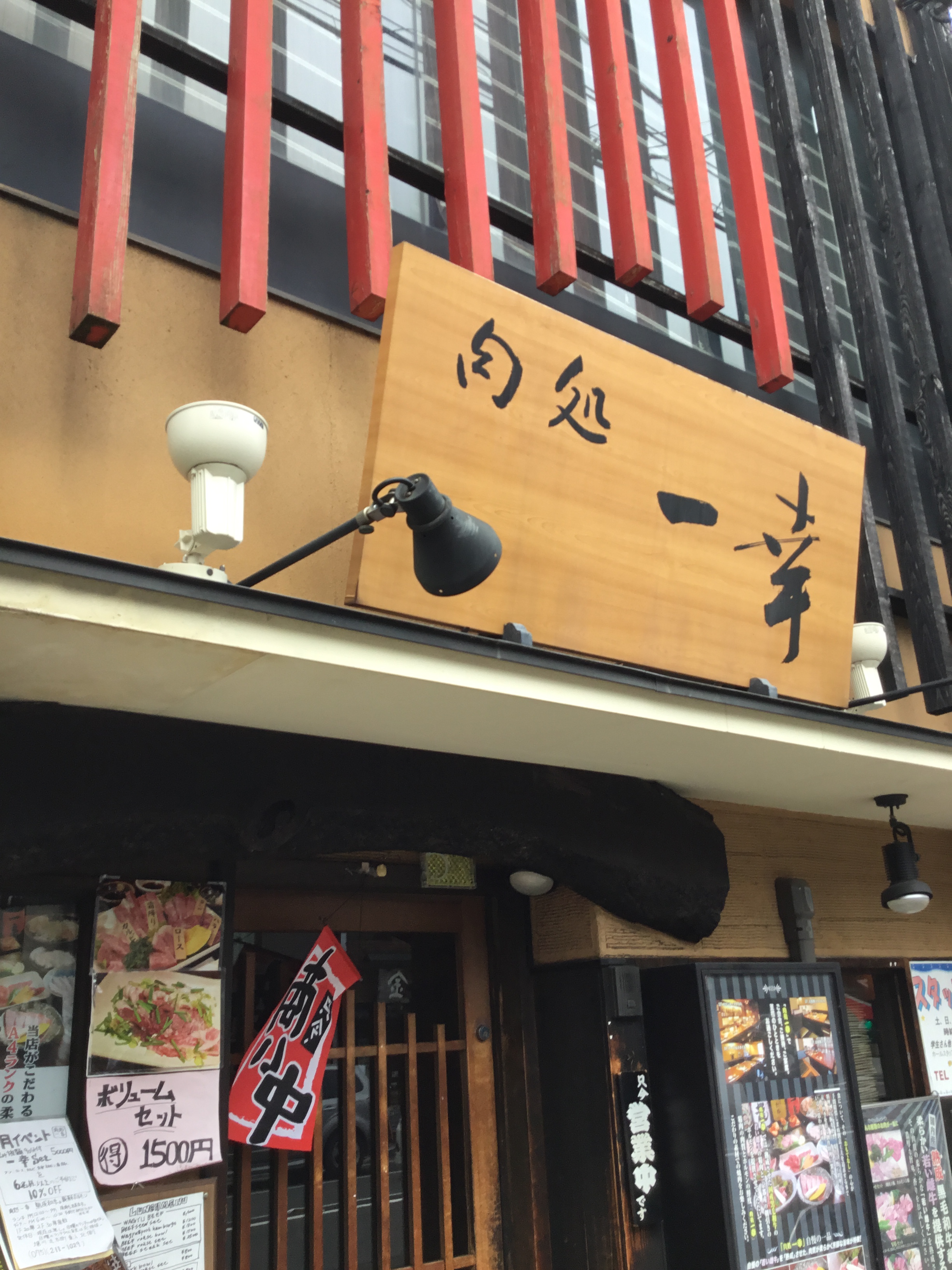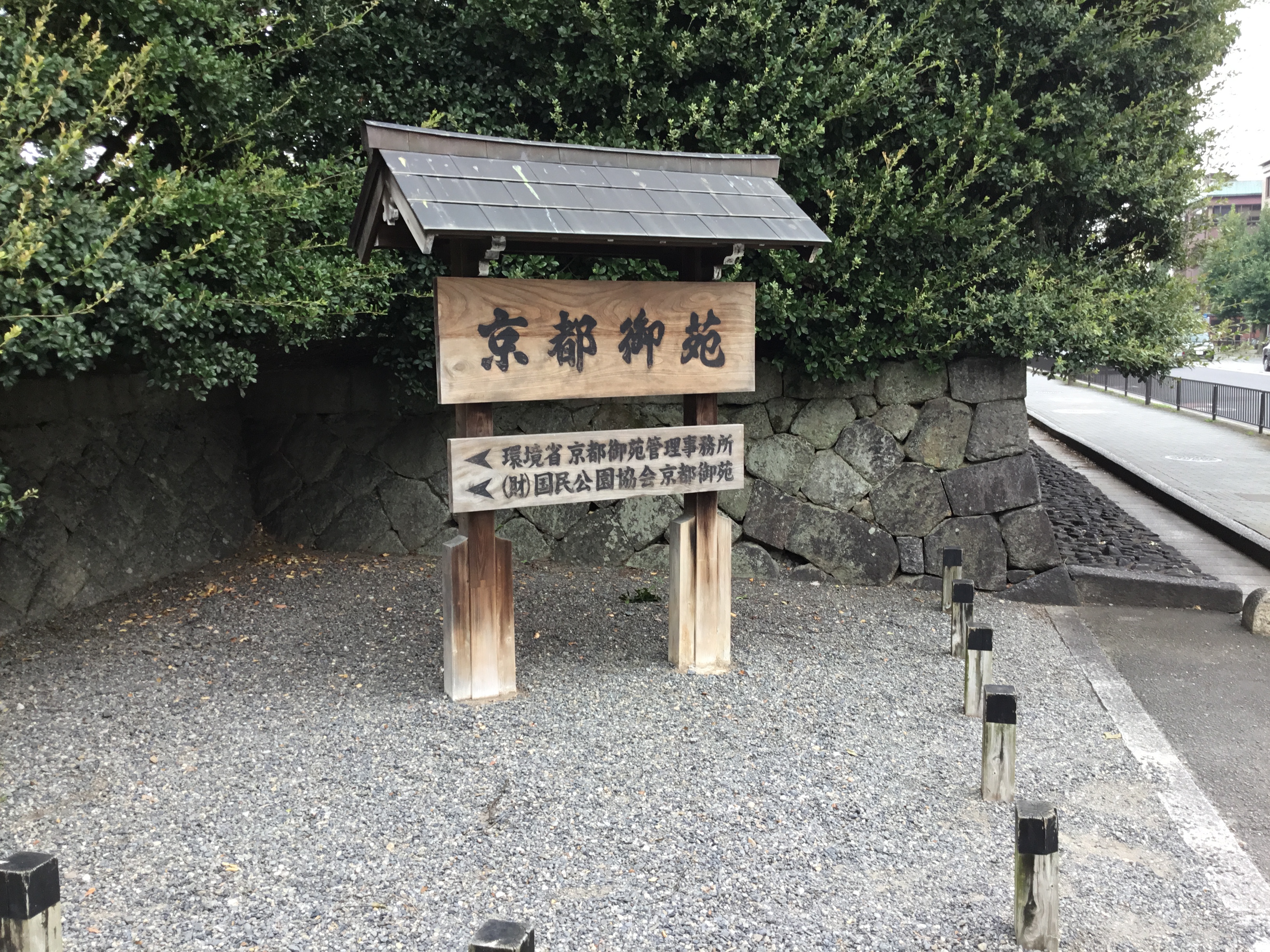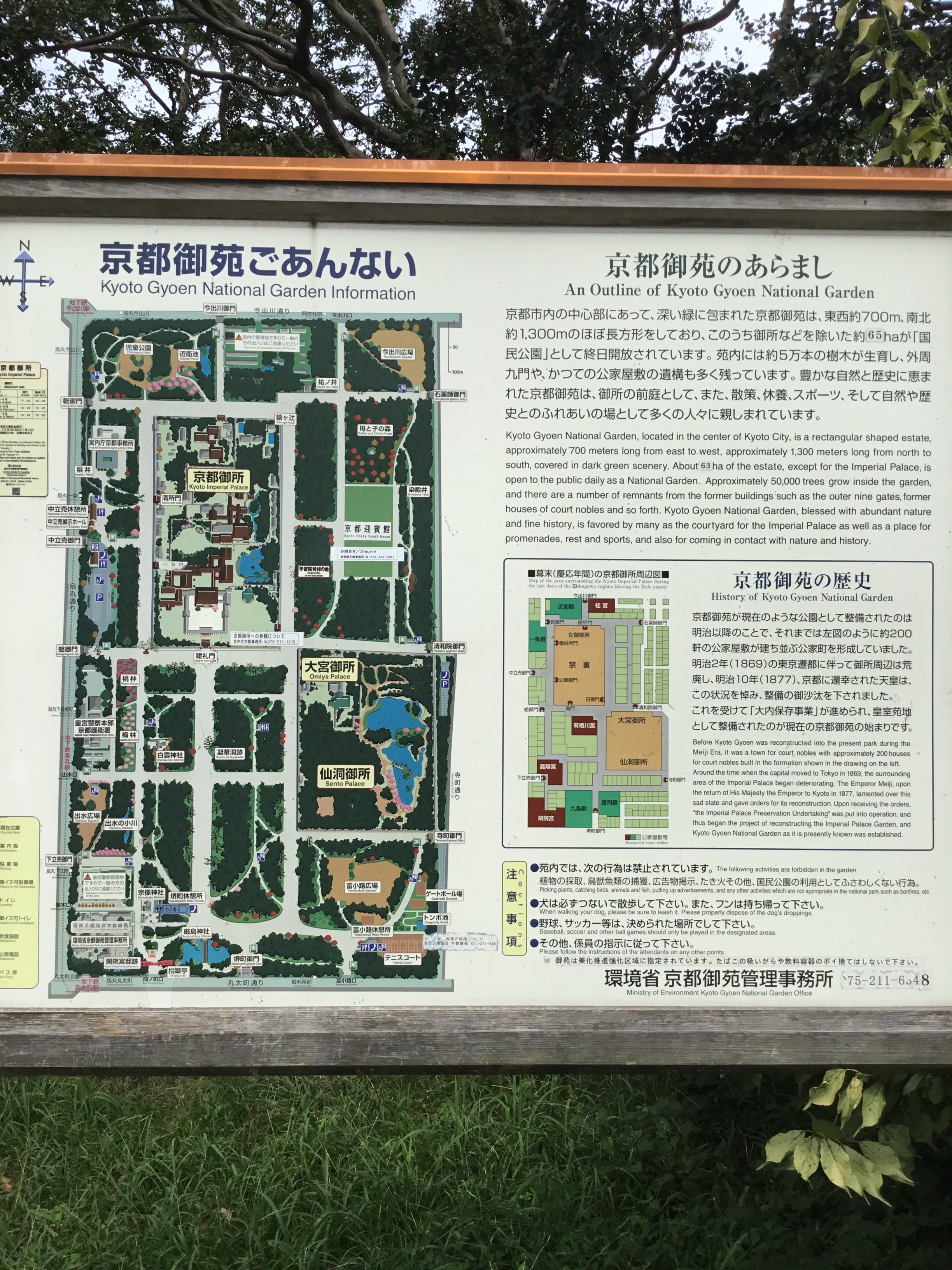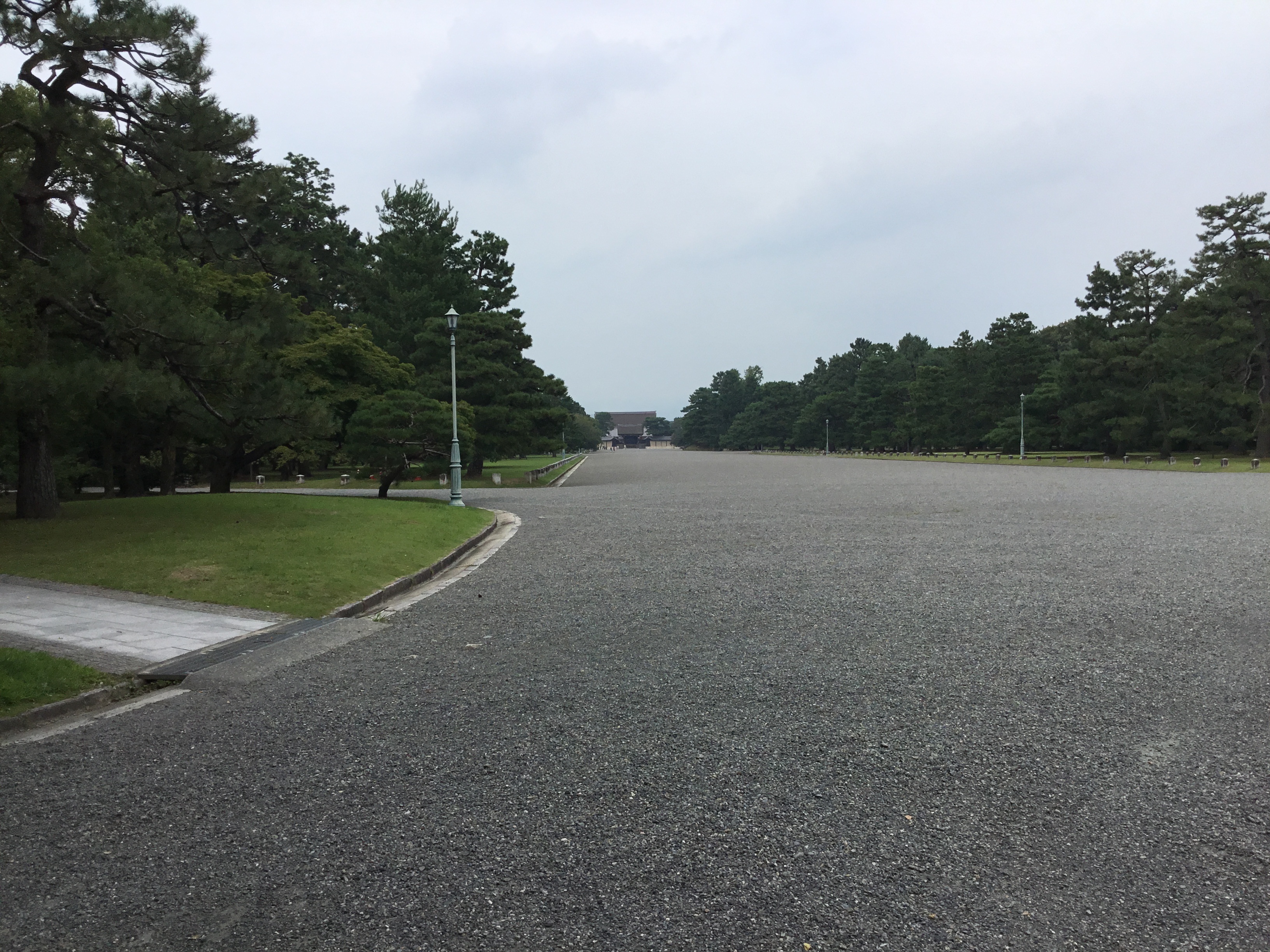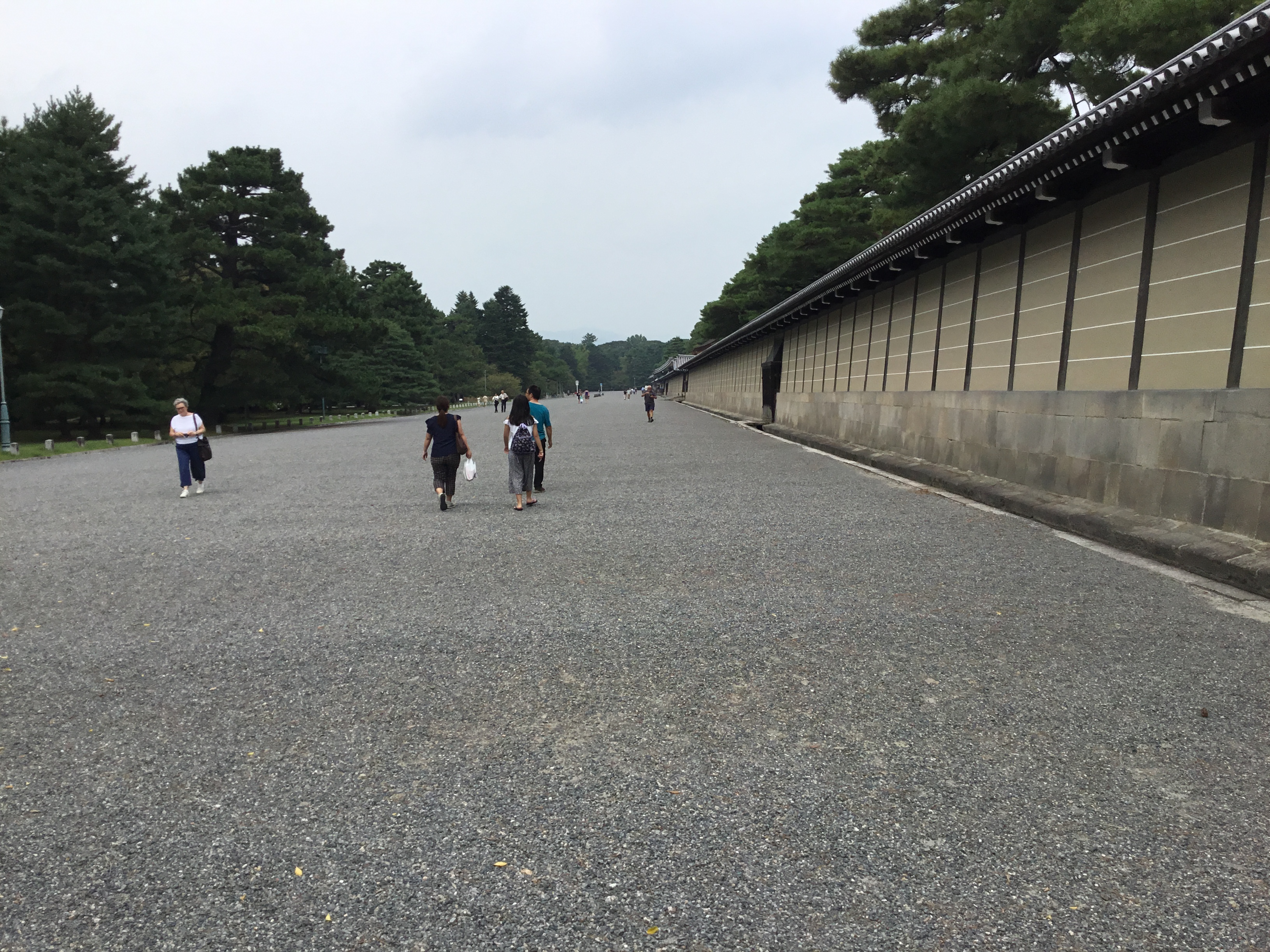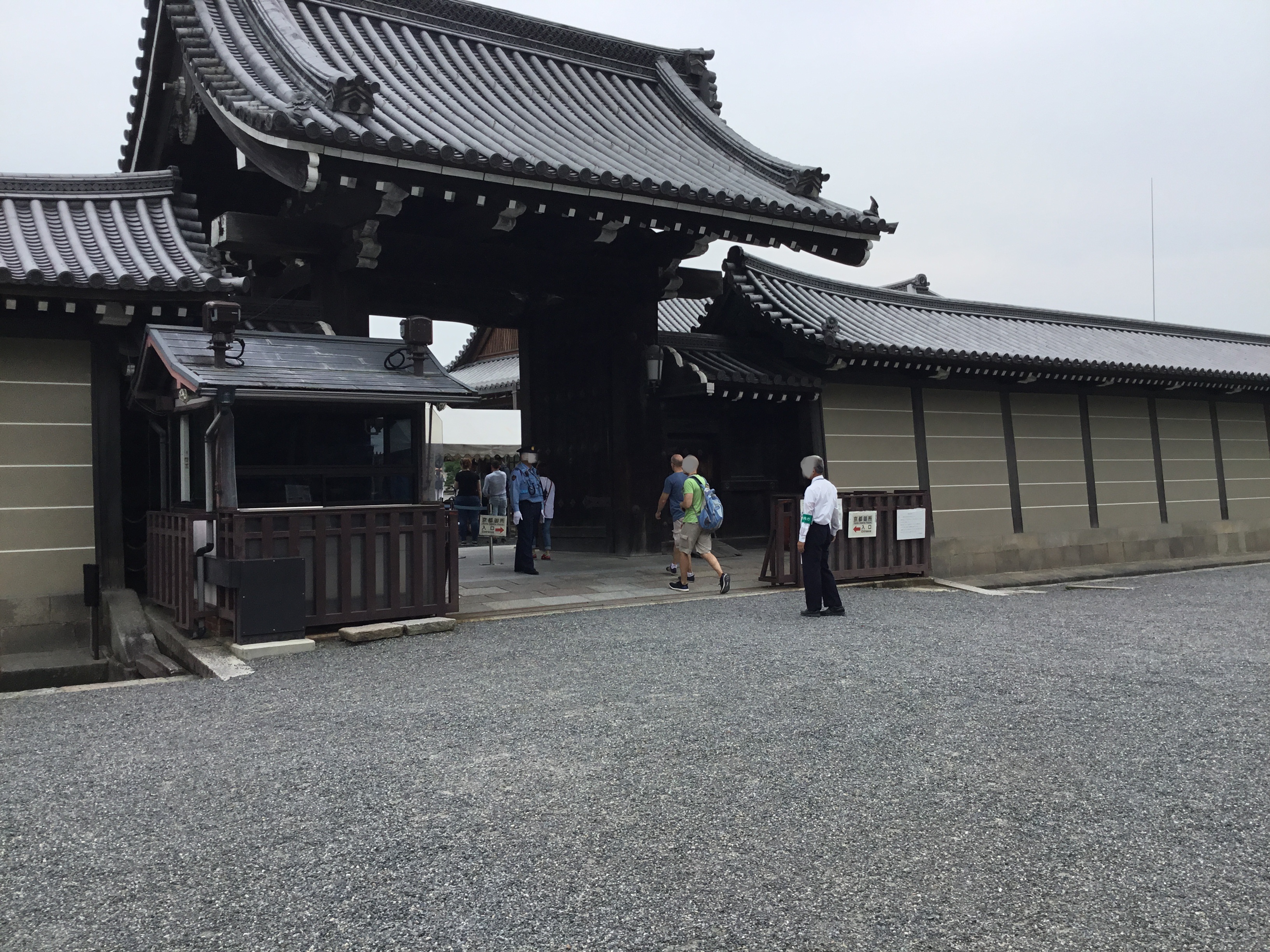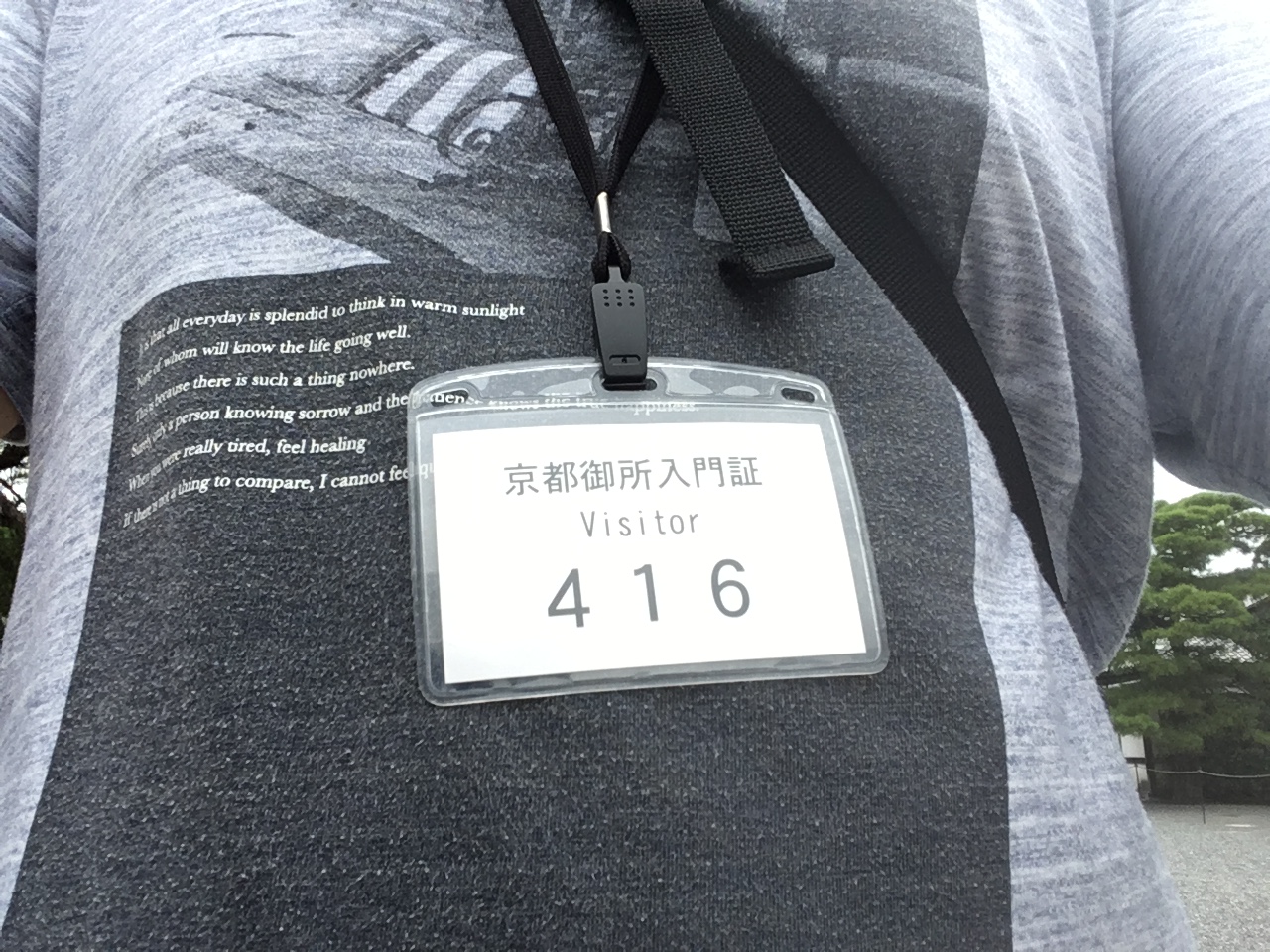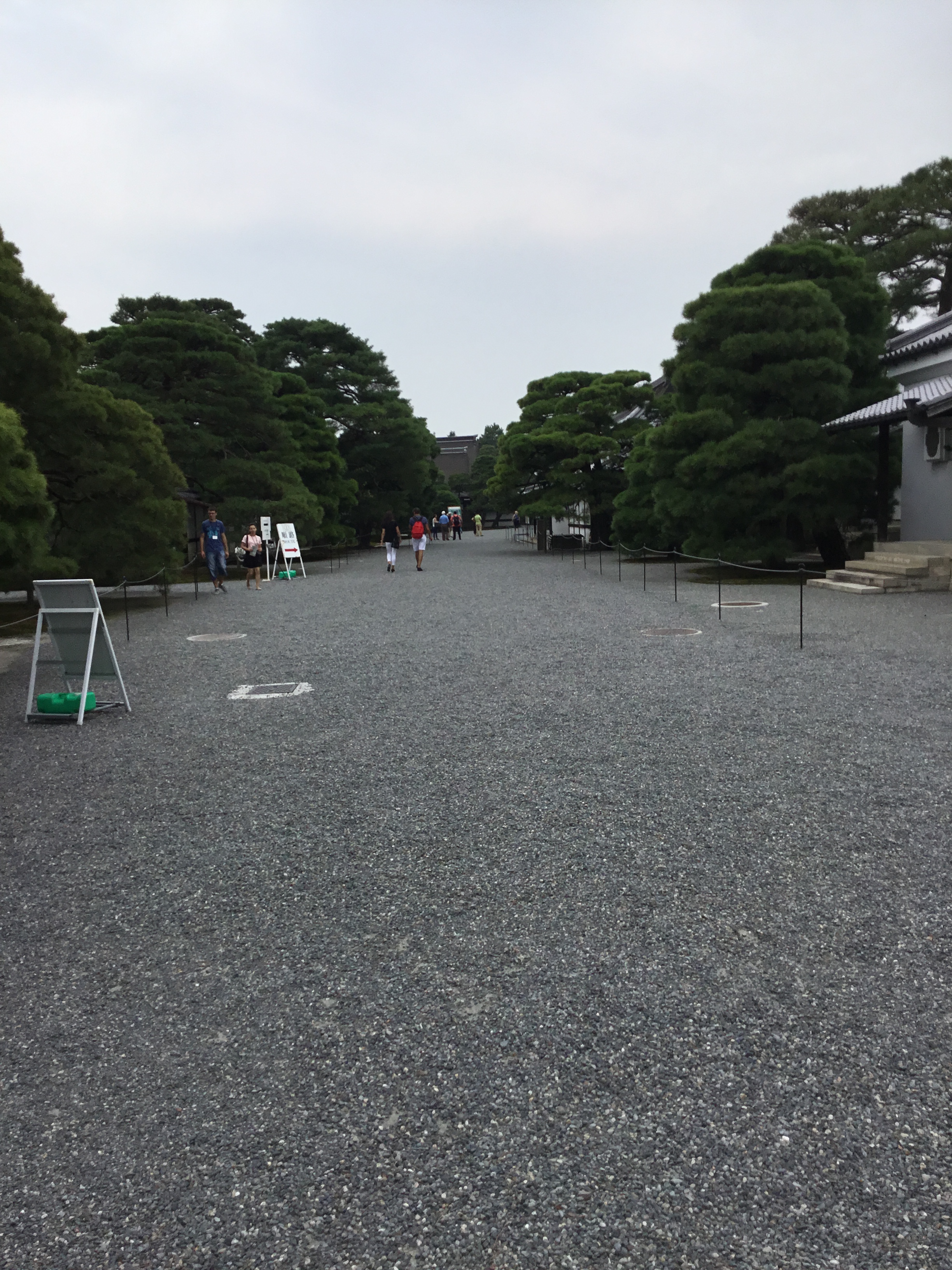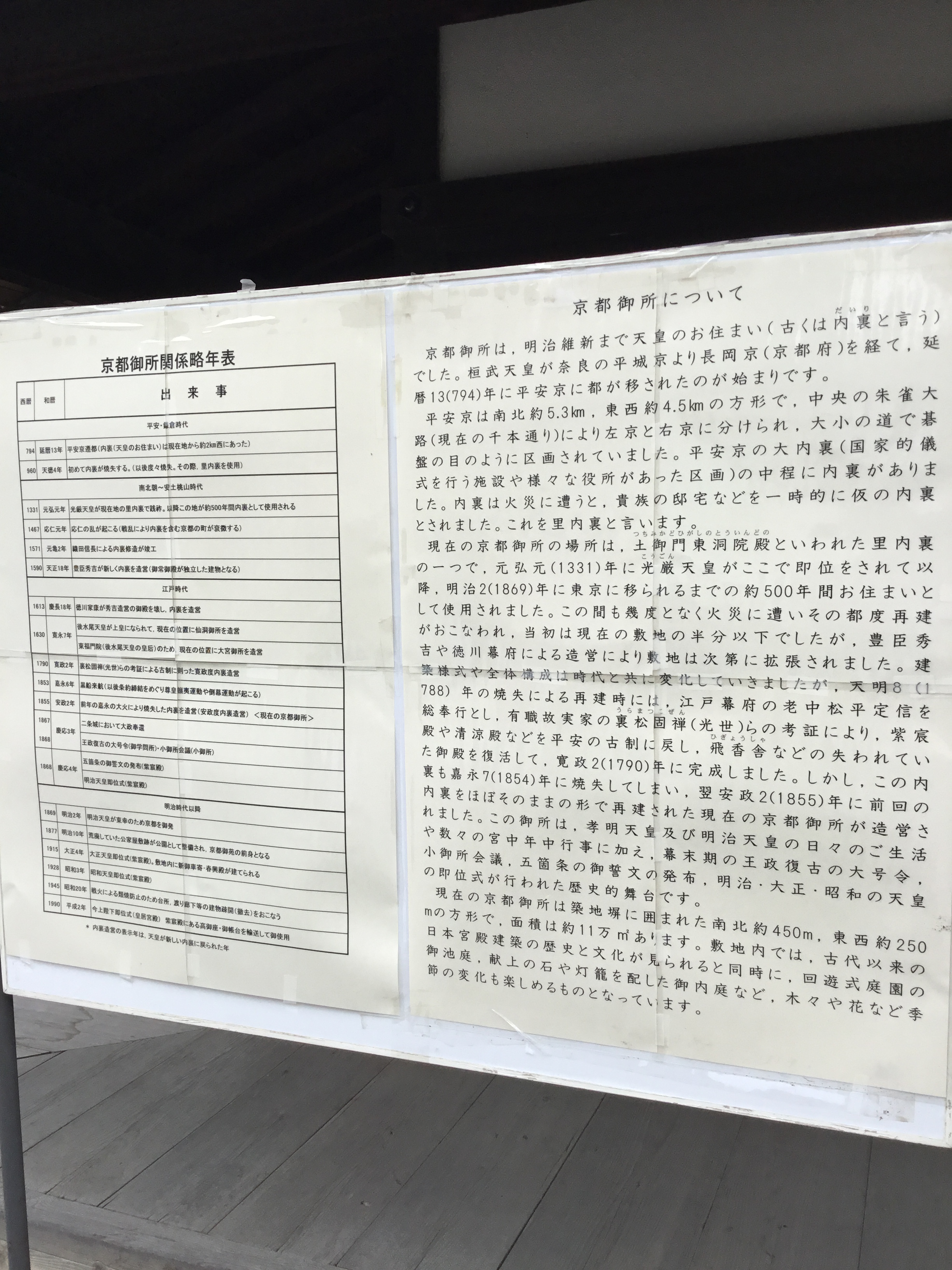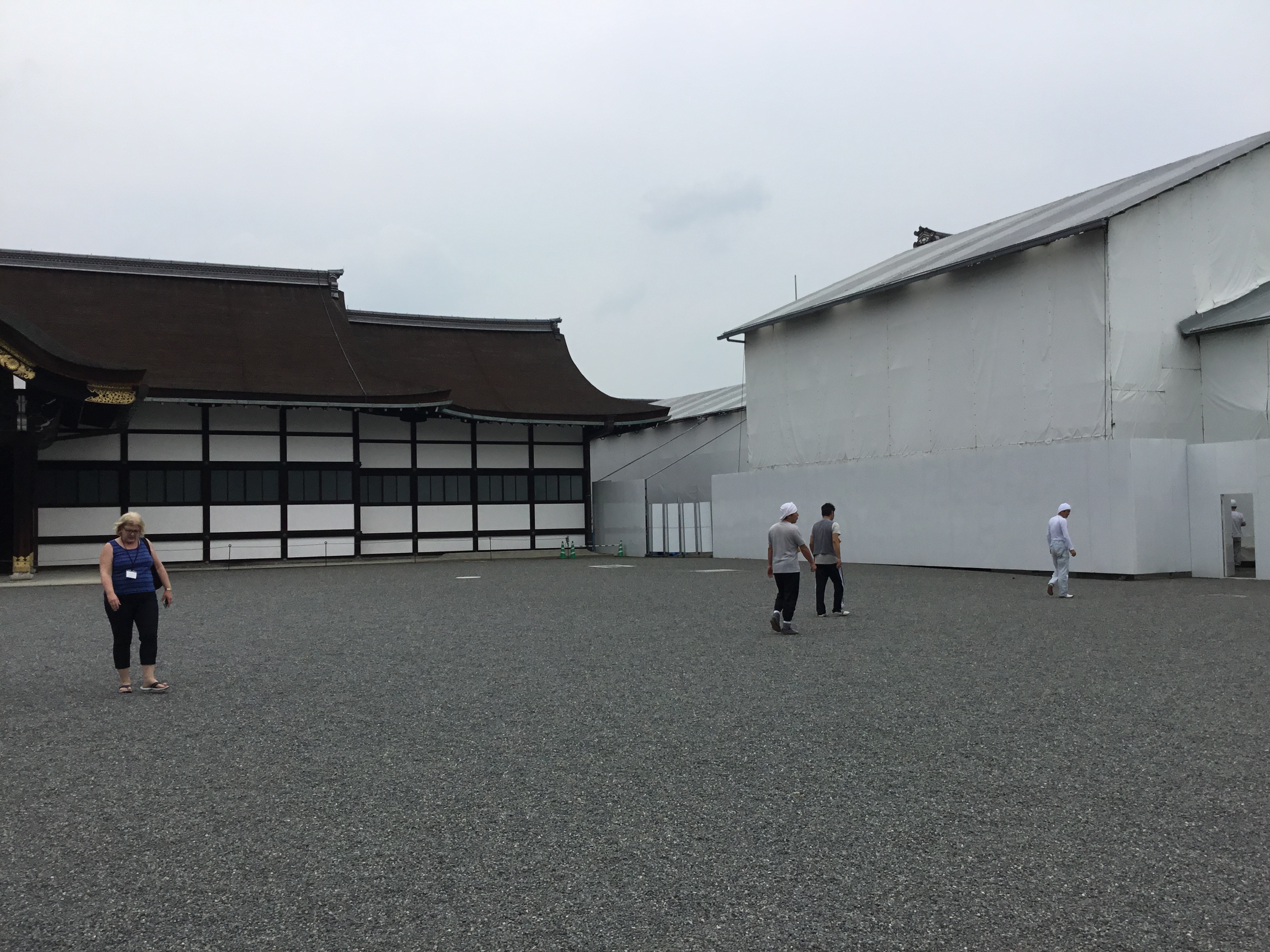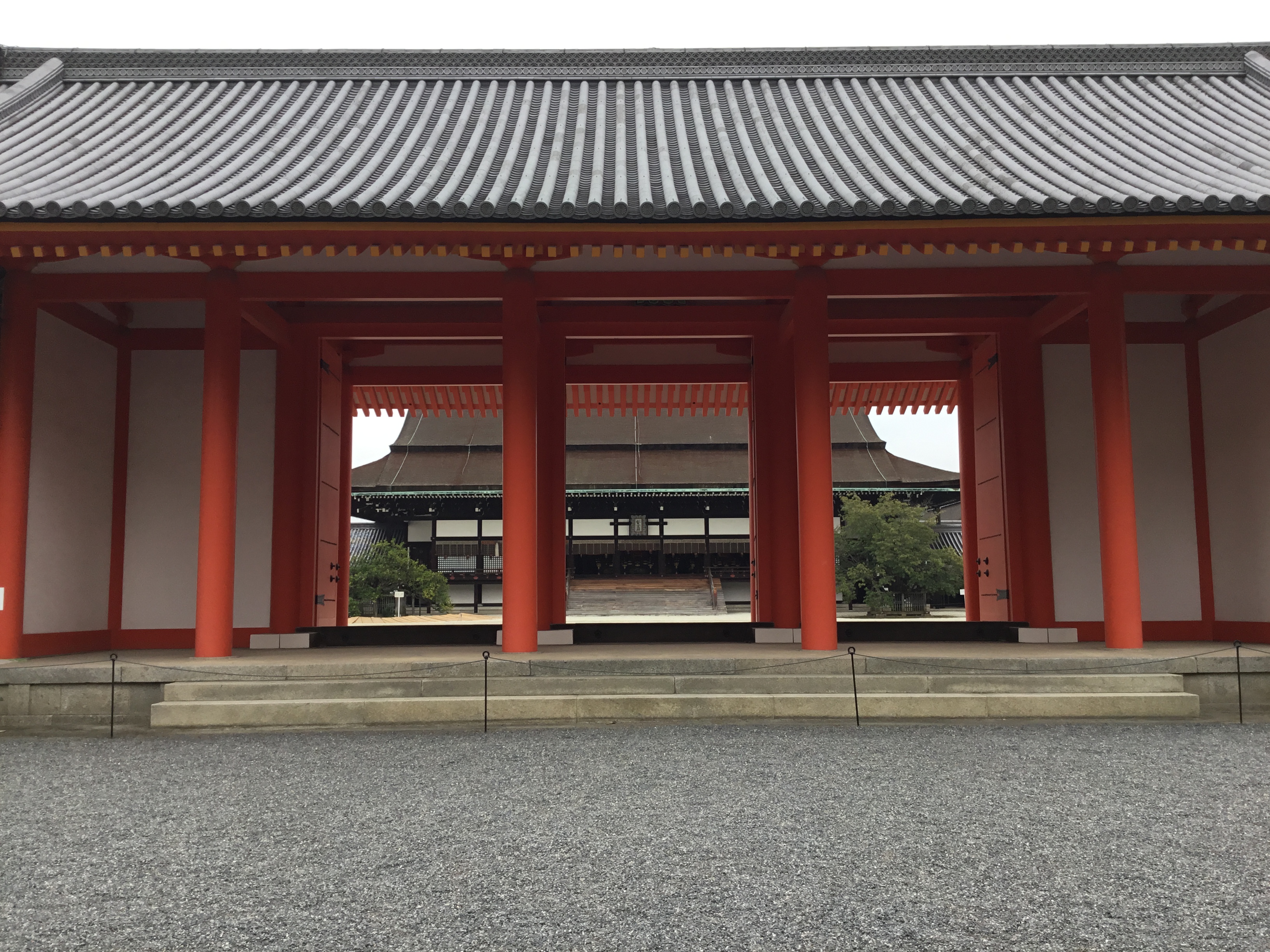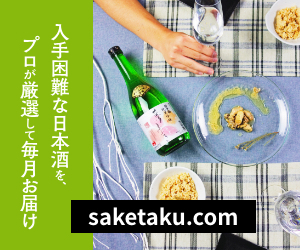- Home
- My Trip Diary
- Seeing “Takamikura” at Shishinden in an Unexpected Visit to Kyoto Gosho
Seeing “Takamikura” at Shishinden in an Unexpected Visit to Kyoto Gosho
- 2018/9/18

Good evening!
Thank you very much for visiting this blog.
Today I’d like to write about my trip to Kyoto Gosho (Kyoto Imperial Palace).
Contents
Nihonshu serving restaurants along Marutamachi street
After leaving Nijojo (Nijo Castle) from the east Otemon (the east gate), I moved to Kyoto Gosho.
The reason why I visited there was its location.
Well, the company which I used to work for had a branch in Karasuma Dori area.
When I was working at the company, I heard that Karasuma Dori was the center of Kyoto’s economic.
I thought that it would be nice to research restaurants in Karasuma Dori.
I finished Nijojo and saw a map.
I found that there is Kyoto Gosho in Karasuma Dori, and it was just across a street from Nijojo.
I decided to visit there even though it was not a part of the plan.
I crossed Horikawa Dori in front of Nijojo’s front entrance, and walked to the north.
I turned right at a junction at “Horikawa Marutamachi”, and walked further to the east along Marutamachi Street.
I checked shops and restaurants on the way.
The official theme of this trip was to research restaurants which serve Nihonshu, even though the reports has been become like a tourist blog^^;
After walking for a while, I found a good-looking restaurant.
I thought that it was “good-looking” because it had narrow entrance and fine front gate.
This restaurant’s name is “Kyo-ryori Tategami”.
You can enjoy traditional Kyo-ryori (Kyoto’s local dishes) of the season, and specially selected Nihonshu from all over Japan.
I didn’t go in at this time even though it looked nice, but I regretted it when I found the details of the service on their website later.
Well, I wasn’t brave enough to go alone in sweaty clothes after walking in a hot day, any way ^^;
After I passed “Tategami” and walked further,
I found another good-looking restaurant.
This is “Nikudokoro Ikko”.
According to their website, they are “Yakiniku (=BBQ)” restaurant, but they named themselves “Nikudokoro (written in Chinese letters meaning “meat place”)” instead of “Yakiniku”, as they had a policy to stick to the essential character of meat, and present the best of it to customers.
They only provide domestic black beef, and also only aged meat of young cows.
They serve not only standard menus such as sirloin or ribs, but also unusual parts such as a part called Tenniku (also known as “Tsurami”, beef cheek), and Hoso (chitterlings).
I got interested in this restaurant too, but I didn’t go in because I didn’t have enough time for Yakiniku, and also because I wanted to see around more to find more Kyoto-like restaurants. So only a photo for this restaurant, too.
According to their website, the Nihonshu they had was only “O-karakuchi Junmaishu Otora”, but the menu on the board in front of the restaurant included “Recommended Sake: From 600JPY”.
I guess that they had more sake to enjoy.
Kyoto Gyoen
If I had more people to go with, more time, and more money, I would try every restaurant which I got interested in.
However, I had none of them, so I had to choose one.
While I was considering which to take,
I arrived at “Kyoto Gyoen” in which Kyoto Gosho locates before I decided a place for a meal.
Kyoto Gyoen is a big square park of 700m from east to west, and 1,300m from north to south.
There is Kyoto Gosho in which the successive emperors lived from 1331 of end of the Kamakura period to 1869 of the start of the Meiji period in this park.
How big is it?
As mentioned on this guide board, the south edge of Kyoto Gosho (you can see a square area with some buildings in the center. That is Kyoto Gosho.) is almost the center of Gyoen park.
The photo below was taken near the pond in the bottom of the map toward Kyoto Gosho.
Kyoto Gosho is so far like you can see in the photo.
I walked from this point to Kyoto Gosho on this straight way.
I had already walked for about 2 hours, but I was ok to walk and I was still a quick walker.
In spite of it,
It took me 7 minutes to get to a gate called “Kenrei Mon” at the south edge of Kyoto Gosho in the photo above.
Kyoto Gosho
I wished to see inside of Gosho, but I thought that visitors were not allowed to go in.
So, I started walking around Gosho along the wall to the west.
???
Visitors were entering Gosho.
Well, I didn’t know that Kyoto Gosho is open for tourists through a year (except for Monday (if it’s national holiday Monday is open, and Tuesday become off instead), around New Year’s Day, and other days of imperial festivals).
I took this unexpected event as a reward for my doing good things in daily life.
I entered Kyoto Gosho after a baggage inspection at the entrance.
I received a security pass.
The inside of Kyoto Gosho was like this tourist brochure below.

The visitors must walk along a predetermined route.
First, I started walking to the south.
The inside was so wide as well^^;
After going for a while,
I found an explanatory board about Kyoto Gosho.
History of Kyoto Gosho
Japanese school kids learn the year of the capital moved into Kyoto with a phrase; “Nakuyo Uguisu Heian-kyo (Singing Nightingale of Heian-kyo, “Nakuyo” also express the number “794” in Japanese pronunciation, and “Heian-kyo” is the name of the capital of the time. I heard that this rhyming is not used at school any more though ^^;).
Emperor Kanmu moved the capital to Kyoto in 794, and opened Heian-kyo.
So, this Kyoto Gosho might be thought that it was built around 794.
However, the present Kyoto Gosho’s building was originally a residence of a noble, Fujiwarano Kunitsuna.
Emperors in the later Heian period (which means much later than year 794) such as Emperor Rokujo or Emperor Takakura used this residence as “Sato Dairi” (Temporary residence of the emperor. When the main house had problems such as fires, emperors used nobles’ residences as their house until the main house got repaired).
This “Sato Dairi” was called “Tsuchimikado Higashino Toindono“, and this is the origin of the present Kyoto Gosho.
The emperor’s residence in the very first time of Heian located in “Senbon Marutamachi“, which is close to Nijojo to the northwest according to Kyoto City’s website.
The website also introduces a history that Heian’s Dairi (emeperor’s main residence) had burning down and rebuilding 14 times between year 794 to 1227.
The present Kyoto Gosho has also burnt down many times in later times, and it had fires 6 times during 260 years of the Edo period.
The building we see now was rebuilt in 1855 (the second year of the Ansei period) according to the study of Dairi in the Heian period.
This Kyoto Gosho was used as the emperors’ residence from 1331 of Emperor Kogon‘s time until Emperor Meiji moved to Tokyo in 1869.
Emperors after Emperor Kogon had held ceremonies of accession in this Kyoto Gosho until Meiji.
The last ceremony of accession in Kyoto Gosho was held for Emperor Showa, and the first emperor who did the ceremony in Tokyo is the emperor of this Heisei era.
People who are my age or older should remember news about the ceremony when the era name changed to Heisei, such as a special chair for the emperor called “Takamikura” carried from Kyoto Gosho to Tokyo for the ceremony, and carried back to Kyoto after the ceremony.
Now, the emperor is to change soon, and it was just officially announced on the day before that the next ceremony of accession will be held on May 1st, 2019.
The chair should be carried from Kyoto Gosho for this ceremony in the next year, too.
Shishinden Palace & Takamikura
Well, let’s get back to the report.
I started walking along the route, and this building below was the first building appeared.
This is “Okuruma Yose (Carriage Porch)”.
This is an entrance which the higher classed noble people used when they visited here at various ceremonies and audience with the emperor.
The noble people entered the building from this entrance,
And they were guided to the next building called “Shodaibu no Ma” and waited for the caller.
This building has 3 rooms called “Tora no Ma (Room of the Tigers)”, “Tsuru no Ma (Room of the Cranes)”, and “Sakura no Ma (Room of the Cherry Trees)” from the left which were named after the drawings on the doors of each room.
The rooms which the noble person was guided into depended on his position, and higher classed people could use the right rooms.
I walked to the north from “Shodaibu no Ma”.
Then I arrived this place which was under construction at that time.
I walked along this wall and turned left.
After walking further,
“Jomeimon“, the front gate of “Shishinden Palace” which is the center of Kyoto Gosho appeared.
The visitors were not allowed to enter from this gate, and the entrance for visitors was at a different place at the side.
Visitors can enter this area, but they still cannot go closer to Shishinden, which you can see over the gate, and they can only see the palace a little far from it.
Shishinden is the most important palace in Kyoto Gosho, and very important ceremonies such as ceremonies of accession were held here.
The emperors’ special chair “Takamikura” is also placed in Shishinden, and maybe you can see it if you expand the photo below.
Let’s expand it.

A gold-colored thing is probably Takamikura.
I put more details from the brochure below.

The Emperor’s Throne and the Empress’ Throne
The throne standing in the center of the Shishinden is the Emperor’s throne (takamikura), with the empress’ throne (Michodai) standing to the right. These thrones are used especially during the enthronement ceremony of a new emperor. The thrones were made in 1913 and were used in the enthronement ceremonies of the Taisho and Showa Emperors, and for that of the current Emperor. When the current Emperor was enthroned, these two thrones were transported from Kyoto to the Imperial Palace in Tokyo. The emperor’s throne itself stands on a black lacquered platform surrounded by red-lacquered balustrades, under and octangular canopy supported by eight columns. There is one large and eight small phoenixes adorning the canopy. The phoenix is an Imperial symbol. The empress’ throne is a very similar structure to that of the emperor, but is about ten percent smaller in size.
from ‘Kyoto Imperial Palace (Kyoto Gosho) tourist brochure’
by Kyoto Office of the Imperial Household Agency
Takamikura might be carried to Tokyo again about a year and a half later for the ceremony.
There’s more about Kyoto Gosho, but I’d like to stop here and continue in the next blog.
It's our great pleasure if this article is helpful for you.
Restaurant Information
| Shop Name | |
|---|---|
| Prefectures | - |
| Tel | |
| Address | |
| Nearest Station | |
| Homepage | - |
| Business Hours | - |
| Holiday | |
| Introduction | |
| Sake List |
|


